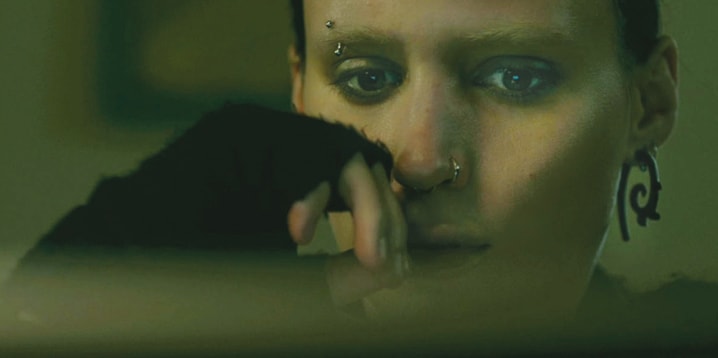The Girl with the Dragon Tattoo
3 stars (out of 4)
Rated: 18A
David Fincher’s The Girl with the Dragon Tattoo is dirtier, more violent and marginally more complicated than the Swedish original — which was so recent, it still feels like it’s in theatres.
But is Fincher’s version any better? And does it matter?
Here’s where things start to get interesting, but ultimately it all comes down to the “girl” of the title, played here with a ferocious combination of rawness and vulnerability by 26-year-old Rooney Mara.
Her take on cyberpunk Lisbeth Salander is the real reason to etch this Dragon Tattoo onto your grey matter, even if Daniel Craig’s Mikael Blomkvist is merely adequate as her crusading journalist sidekick.
Fincher’s remake and the original film are both cut from the same pulp cloth as the first novel of the Millennium Trilogy by Stieg Larsson, who needed a good editor as much or more than he needed worldwide acclaim. The late Swedish author obviously had no fear of thriller clichés, or of telegraphing major plot reveals.
The question is, why would this material fascinate Fincher? He’s certainly no stranger to pulpy thrillers — such early films as Seven and The Game proved that — but he’s long since moved on to deeper probes of the human psyche, as witness more recent works Zodiac and The Social Network.
He also brings a certain look of dread to his films, which this time seems distinctly second-hand. Apart from a knockout opening sequence, a 007-style montage of figures swimming in something like oil, set to Trent Reznor’s vibrant rip of Led Zep’s Immigrant Song, the film might simply have recycled the sets of Niels Arden Oplev’s 2009 Dragon Tattoo.
The story still plods, perhaps even more than before. Mara’s Salander and Craig’s Blomkvist don’t even meet until the 80-minute mark of the film’s bladder-testing 158 minutes. They don’t start busting crime until about the 90-minute mark, a time when many other movies are wrapping up.
On a remote Swedish island, where even a billionaire can’t get decent cell service, lives the bickering family of elderly industrialist Henrik Vanger (Christopher Plummer, happily hamming).
Now a dark and inhospitable place, the island used to ring with the sound of children. One of them was 16-year-old Harriet (Moa Garpendal), beloved niece of Vanger, who vanished in the summer of 1966.
Harriet has now been missing for four decades, presumed dead and long consigned to the police “cold cases” file. But Vanger refuses to die without knowing the answer to the mystery, which for him is unusually insistent: he’s been receiving regular clues that suggest the killer is taunting him.
Vanger’s proposition to Blomkvist: Investigate Harriet’s disappearance and apparent death, under the guise of writing a biography.
Blomkvist has nothing better to do, although he does have a loyal and loving girlfriend in Erika Berger (Robin Wright Penn), his editor at Millennium, whom he’ll leave behind for many months.
But he won’t want for company. Enter Salander, introduced as someone whom her co-workers don’t much like, and for good reasons — and not just because of her fondness for leathers and piercings of every variety.
Salander’s abundant personality disorders, the cause of which are detailed in later chapters of the trilogy, have obliged her to become a ward of the state, under the too-close attention of her oily guardian, Bjurman (Yorick van Wageningen).
A subplot involving Salander’s eye-popping resolution of her status is one of the few areas where Fincher has pushed the violence beyond what Oplev did in the original Dragon Tattoo.
Vanger’s family, described by the patriarch as “the most detestable collection of people that you will ever meet,” should fill the void. Alas, most of them are drier and flatter than a Swedish cracker.
But what could anyone do with eye-rolling material like this? The villain is pointed out very early in the proceedings, something Fincher oddly underlines with a cat-torture scene (the violence happens off screen) that might as well be a flaming arrow of revelation.
But in the incendiary performance by Rooney Mara, one of the year’s best, you have all the incentive you need to drag out the Dragon Tattoo yet again.
Noomi Rapace was great as the original Salander; Mara goes her one better with a performance that is as disturbing and wounded as the character is meant to be.
Peter Howell is a syndicated movie critic for the Toronto Star.
